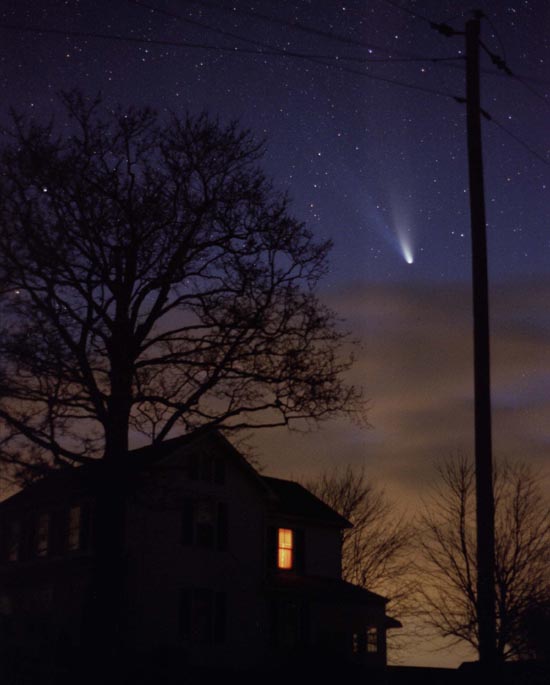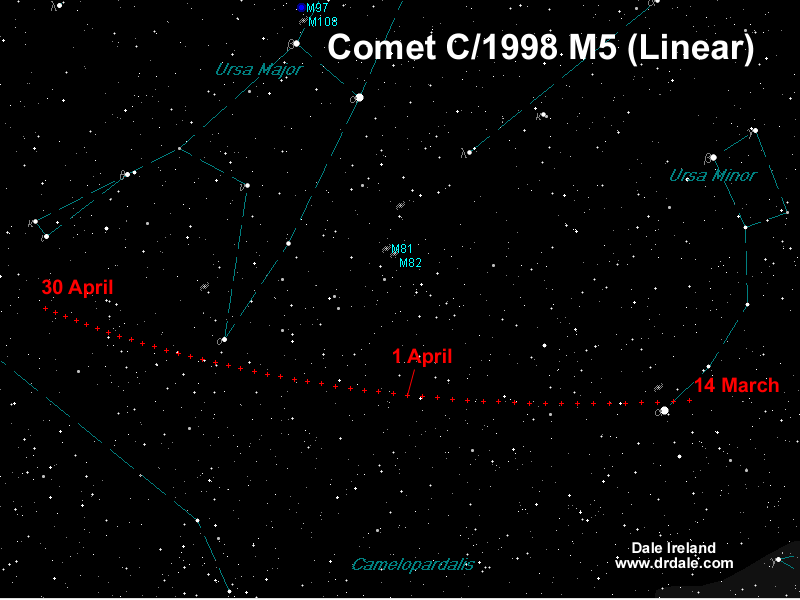Comets
a research report by Lydia Gordon
Astronomy and Cosmologies,
Spring 99
with E.J. Zita
I have
investigated comets by reading modern scientific literature about it, observing
it, and researching how European societies
understood it.

-
What
is a comet? A comet is nothing more than a dirty snowball formed from
dust clouds within galaxies. In 1950, John Oort came up with the idea that
the Oort cloud was the creator of essentially the whole comet population.
The cloud is believed to claim anywhere from 10^25-10^27 comets total.
(Chapman, p164). When a comet passes close to the sun in its orbital path,
the ice sublimates creating a nucleus, which in turn forms a long beautiful
tail . The orbital path consists of three eccentricities, the ellipse,
parabola, and the hyperbola.(Chapman, pp46-49) These unique astronomical
bodies act as natural space barometers and have provided reliable indications
of the day to day strength of the sun's particle emissions (Brown, p.11)
-
Observations
of the stars, particularly comet C/1998 M5 (Linear). There is a path across
the night's sky trailing at this moment by the tail of Ursa Major. Did
I find this tailess comet? Apparently I did not. I did get
some observations of the stars around that area jotted down though.
The Comet C/1998 M5 (Linear) at this moment has around a magnitude of approximatly
13. The lowest magnitude that it showed was around the beginning
of March, and even that was a 9. Check out the link, it has all the
information that I could not produce on my own.
-
While the Chinese scientifically graphed each comet's passing, the European
societies have watched comets with both fear and admiration. To them,
comets were the portenders of plague, war, famine, and the deaths of notables.
Even the word disaster is composed of two latin words that codemn comets:
dis meaning evil, and aster meaning star(Comets in History). Julius Ceasar,
Attila, Emperor Valentinian, and Charlemagne were all said to have been
transported to the heavens by a passing comet. In 77 A.D, Pliny wrote,
"A comet is a particularly frightful body, and not easily atoned, it is
usually a very fearful star and announces no small effusion of blood. "
(Brown, pp.15-21). It wasn't until well in the 1500's that European astronomers
started theorizing the true scientific aspects of comets.


 Courtesy of http://www.drdale.com/comets/images/finders/m5w.gif
Courtesy of http://www.drdale.com/comets/images/finders/m5w.gif